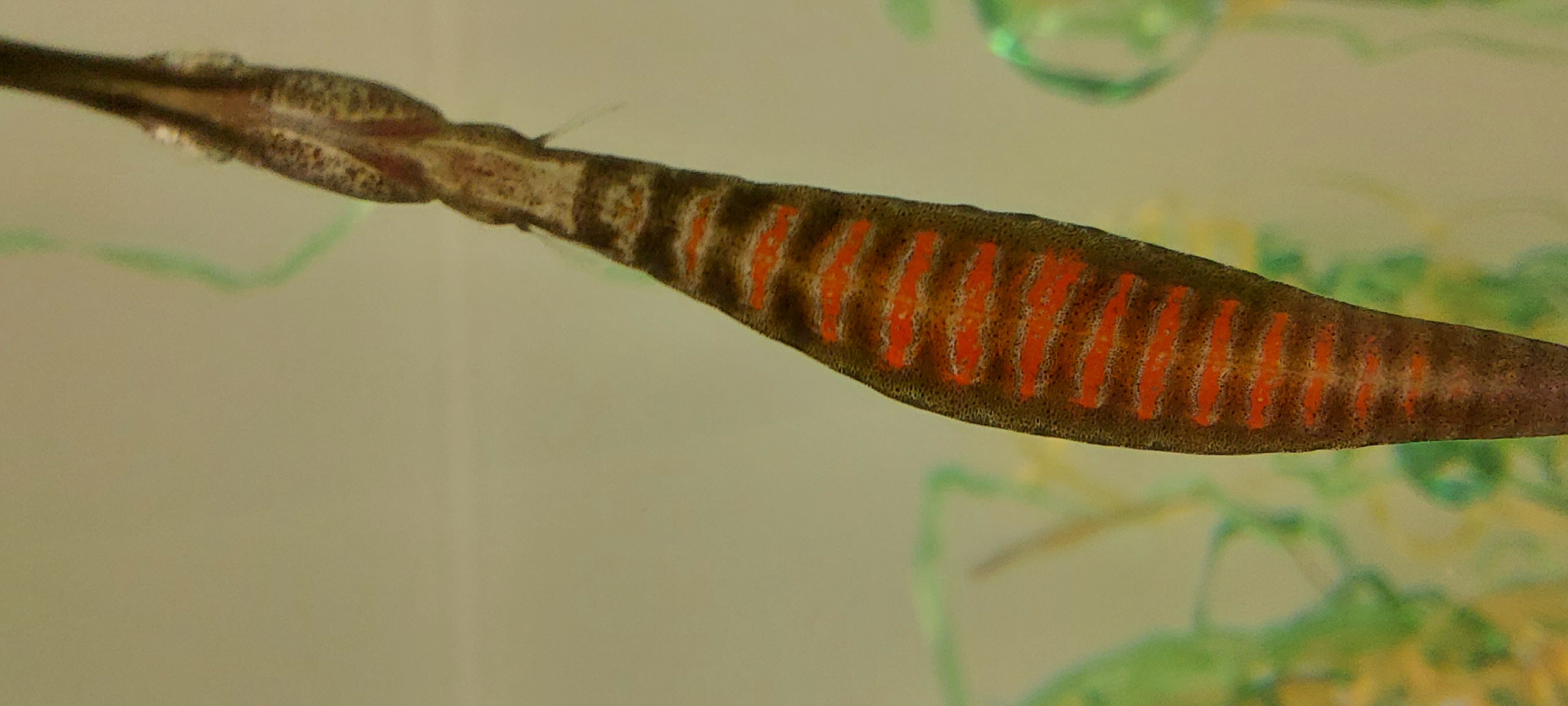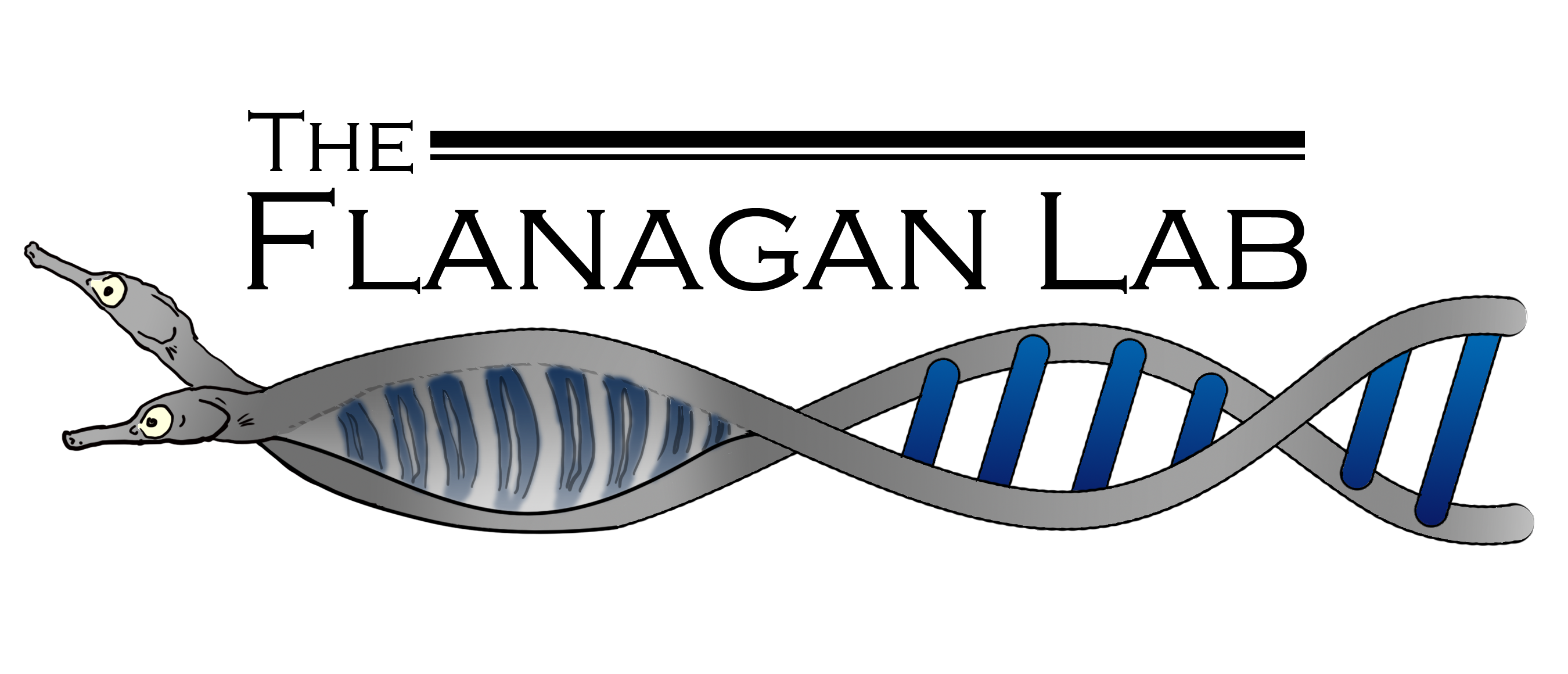What role does sexual selection play in shaping traits in natural populations?
Mating behaviors usually involve other non-behavioral traits and can be shaped by ecological and environmental factors. Therefore, behaviors often experience complex selection pressures, including strong sexual selection. The lab works on characterizing the interacting roles of morphological traits, mate quality, and environmental factors in mate choice and sexual selection. Focusing on sexual selection facilitates integrative studies that incorporate animal behavior, mating patterns, ecology, and population dynamics.
Most of the empirical work in the lab on this topic focuses on Syngnathids, the fish family comprised of seahorses, pipefishes, and seadragons. These fish are particularly interesting from a sexual selection point of view because they exhibit male pregnancy, in which the males care for the developing embryos. In many species, the females also have elaborate display traits to attract the males, and research in the lab works towards understanding how sexual selection shapes those traits. Sarah did her PhD work on the Gulf pipefish, Syngnathus scovelli (pictured below), which is found in the Gulf of Mexico and the Atlantic coast of Florida. That work focused on understanding what evolutionary forces driving population differentiation and how selection impacts the genome.

The Flanagan lab is now focusing on native and endemic pipefish species in New Zealand. Micaela Pullen studied the population dynamics of pipefish in a bay in the Canterbury region, and also did ecological work to understand their role in the broader community of animals living in seagrass beds. Fleur van Eyndhoven described the courtship behaviours of the wide-bodied pipefish, Stigmatopora nigra (female pictured below) and found some surprising results about the stereotypical roles of males and females (stay tuned for a publication with more details!). We are continuing our work to better understand the factors driving sexual dimorphism and population differentiation in these charismatic fish. 
Sexual selection also provides opportunities to model evolutionary complexity. In 2017, Sarah co-supervised an interdisciplinary group of four undergraduate students who created and analyzed an evolutioanry game theoretic model of how male condition, female density, and female mate choice interact in territorial, migratory animals. We found that sexual conflict emerged in some cases, a surprising result that we plan to publish with the undergraduate students as lead authors. This summer research experience highlighted not only how models can shed new light on biological questions, but also how models of sexual selection can captivate young scientists and engage them in the scientific process.
Some relevant papers and theses include:
van Eyndhoven, F. 2022. The role of the novel female ornament in the wide-bodied pipefish, Stigmatapora nigra. http://dx.doi.org/10.26021/12821 link
Pullen, M. 2021. The use of seagrass (Zostera muelleri) habitat types by seagrass communities in New Zealand. http://dx.doi.org/10.26021/11188. link
Flanagan SP, Rosenqvist G, and Jones AG. 2017. Mate quality and timing of reproduction affects sexual selection in a sex-role-reversed pipefish. Behavioral Ecology and Sociobiology. 71(1): 1-10. doi: 10.1007/s00265-016-2255-3 pdf, link to paper, press release, data
Flanagan SP, Johnson JB, Rose E, and Jones AG. 2014. Sexual selection on female ornaments in the sex-role-reversed Gulf pipefish (Syngnathus scovelli). Journal of Evolutionary Biology. 27 (11): 2457-2467. pdf, data
Flanagan SP, and Bevier CR. 2014. Do male activity and territory quality affect female association time in the Brown Anole, Anolis sagrei? Ethology. 120 (4): 365-374. link to paper
